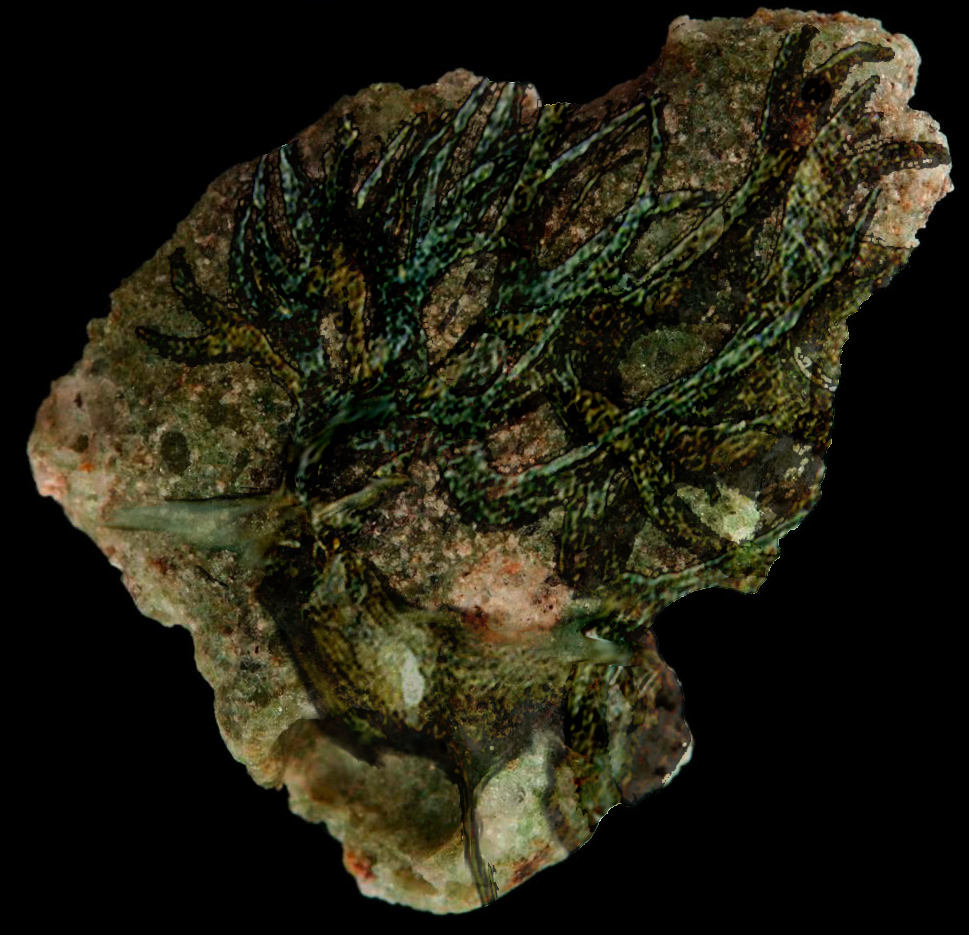The Fredericksburg Sheep
Of all the horrors of the Forgotten American Backcountry, the Fredericksburg Sheep stands apart, being neither horrible to look at, nor reeking of decay, nor creepy, crawly, or otherwise frightful in any manner. The Fredericksburg Sheep is, in fact, a lovely specimen: a full coat of tawny locks, a face and ears the color of warm campfire ash, just the slightest nubbin of blunted horns (like two coffee cups held up to its ears!), and always the faint smell of peach blossom on the wind when they move.
The Fredericksburg Sheep doesn’t actually live in Fredericksburg, but moves in herds along the way where estacado meets escarpment, in and out on the long road from Kerrville to Ozona. It’s said that in the days of the Great Nation of Texas, Fredericksburg Sheep were so plentiful that you’d think a summer rainstorm was rolling in when a flock appeared on the horizon, their coats thick as clouds and the clop of their hooves a soft thunder in the distance. The only way you knew not to draw in the Lone Star Flag and set out the rain barrels was by listening for the melodic coo-diddle-yo-coo of their bleated song. But that was then.
You see, although Native Texans long knew of the sheep, they were never hunted. The animals were so peaceful and pleasant to have around that if you wanted a Fredericksburg Wool Coat, you’d simply wait for a flock to pass through town and take a single lock of hair, one by one, from every sheep who wanted a nice scratch behind their ears. But man has a way of getting greedy, and so in a moonlit pasture in the warm husk of twilight, in early March in the middle-late 1830s, a majestic flock-mother called Ruhelic was shot by a man named Procol Wills. Ruhelic’s death sent immediate shockwaves through Fredericksburg as every mother, man, and child echoed Wills’ fatal blast with wails of grief, feeling as if they themselves now had a hole in their hearts where dreams used to live. As the town’s dirt roads turned to mud with a flood of silent tears, a hopelessness as big as Texas fell upon the land with the last notes of Ruhelic’s co-diddle-yo-cooing song decaying on the night wind.
That was then. Now things have changed for the fate of Texas and the fate of the Fredericksburg Sheep followed suit.
If you see a Fredericksburg Sheep today, plug your ears and run screaming from the beauty as fast as you can. Because while the sheep still roam, their sweet song has forever been lost, replaced now by a haunted keen, a plaintive bleat that will reverberate in your mind with the tin-pan cacophony of all the sounds you’ll never hear again. One bray heard on the wind and you’ll be awash in the yellow-edged nostalgia of Saturday morning cartoon theme songs, the engine rattle of your first car, the laugh of a lost best friend. One more bleat heard bouncing amid the pecan trees and you’ll swear it sounds like the babbling of a child you never had, the roar of a crowd who never adored you, the hum of road for every trip you never took. Meandering in the sounds of your own memory, you won’t be ready for the lamb’s final cry— a dissonant harmony of profound sadness now forever echoing inside you, a fading rush of mental silence you’ll never know again.
Neither Wills nor his family was ever welcome south or west of Dallas again, but Old Rue’s gutted, waxed, and mounted skin still stands silent sentry in the meeting house of the Fredericksburg Order Of The Daughters Of The Pecan, a warning to all outsiders to beware of the song of the sheep.
*****
Chapter Five from my collection of monster stories, Terrible Travelogue, Part 1: The Southwest. You can find the collection here.



